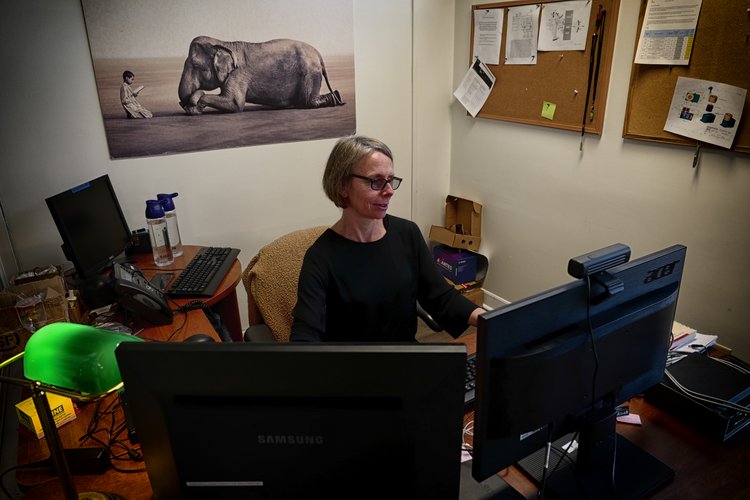5 Easy Facts About Uv/vis/nir Shown
9 Easy Facts About Uv/vis Shown
Table of ContentsThe Buzz on SpectrophotometersSome Ideas on Spectrophotometers You Should KnowCircular Dichroism - TruthsUv/vis/nir Things To Know Before You Get ThisCircular Dichroism Can Be Fun For Anyone

Spectrophotometry is most commonly applied to ultraviolet, noticeable, and infrared radiation, modern spectrophotometers can interrogate broad swaths of the electromagnetic spectrum, including x-ray, ultraviolet, noticeable, infrared, and/or microwave wavelengths. Spectrophotometry is a tool that hinges on the quantitative analysis of molecules depending on how much light is absorbed by colored compounds.
Not known Factual Statements About Uv/vis/nir
A spectrophotometer is typically used for the measurement of transmittance or reflectance of options, transparent or nontransparent solids, such as polished glass, or gases. Although many biochemicals are colored, as in, they absorb noticeable light and for that reason can be measured by colorimetric treatments, even colorless biochemicals can often be transformed to colored compounds suitable for chromogenic color-forming reactions to yield substances ideal for colorimetric analysis.: 65 However, they can also be designed to measure the diffusivity on any of the listed light varieties that generally cover around 2002500 nm utilizing various controls and calibrations.
An example of an experiment in which spectrophotometry is used is the decision of the equilibrium constant of a solution. A particular chain reaction within a solution might happen in a forward and reverse direction, where reactants form products and products break down into reactants. At some point, this chain reaction will reach a point of balance called a stability point.
The Greatest Guide To Spectrophotometers
The quantity of light that goes through the option is a sign of the concentration of certain chemicals that do not enable light to travel through. The absorption of light is because of the interaction of light with the electronic and vibrational modes of particles. Each kind of molecule has a private set of energy levels related to the makeup of its chemical bonds and nuclei and thus will take in light of particular wavelengths, or energies, resulting in special spectral properties.
Using spectrophotometers spans different clinical fields, such as physics, products science, chemistry, biochemistry. circularly polarized luminescence, chemical engineering, and molecular biology. They are widely utilized in lots of markets consisting of semiconductors, laser and optical production, printing and forensic evaluation, along with in labs for the research study of chemical compounds. Spectrophotometry is typically utilized in measurements of enzyme activities, decisions of protein concentrations, determinations of enzymatic kinetic constants, and measurements of ligand binding reactions.: 65 Ultimately, a spectrophotometer has the ability to figure out, depending upon the control or calibration, what compounds exist in a target and precisely just how much through computations of observed wavelengths.
Created by Arnold O. Beckman in 1940 [], the spectrophotometer was produced with the help of his colleagues at his business National Technical Laboratories founded in 1935 which would end up being Beckman Instrument Business and eventually Beckman Coulter. This would come as a solution to the formerly developed spectrophotometers which were not able to absorb the ultraviolet properly.
Not known Details About Spectrophotometers
It would be discovered that this did not offer acceptable outcomes, for that reason in Model B, there was a shift from a glass to a quartz prism which enabled for much better absorbance outcomes - circular dichroism (https://www.indiegogo.com/individuals/36812837). From there, Design C was born with an adjustment to the wavelength resolution which ended up having 3 units of it produced
It was produced from 1941 to 1976 where the rate for it in 1941 was US$723 (far-UV accessories were an option at extra expense). In the words of Nobel chemistry laureate Bruce Merrifield, it was "probably the most important instrument ever established towards the improvement of bioscience." Once it ended up being discontinued in 1976, Hewlett-Packard created the first commercially readily available diode-array spectrophotometer in 1979 called the HP 8450A. It irradiates the sample with polychromatic light which the sample absorbs depending on its properties. It is sent back by grating the photodiode array which spots the wavelength region of the spectrum. Ever since, the production and execution of spectrophotometry devices has increased tremendously and has turned into one of the most ingenious instruments of our time.

Spectrophotometers Can Be Fun For Anyone
The grating can either be movable or fixed.
In such systems, the grating is fixed and the strength of each wavelength of light is measured by a various detector in the array. When making transmission measurements, the spectrophotometer quantitatively compares the fraction of light that passes through a recommendation solution and a test solution, then digitally compares the strengths of the two signals and calculates the official source portion of transmission of the sample compared to the recommendation requirement.
